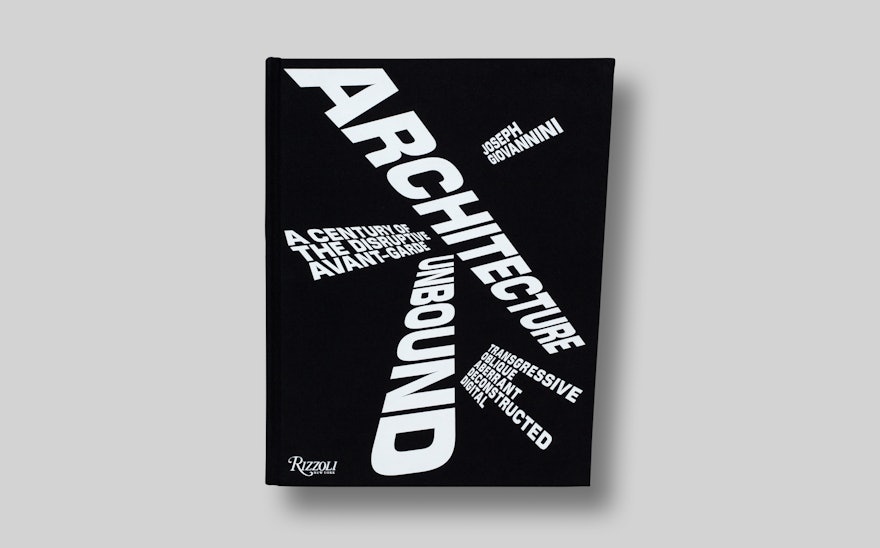The dynamic forms of deconstructivist architecture are rooted in the historical avant-garde in a lineage that continues from the 1920s to the present. In Architecture Unbound: A Century of the Disruptive Avant-Garde, the noted architecture critic Joseph Giovannini examines how the current architectural landscape emerged from the progressive art movements of Europe before and after World War I. Conceived as “an alternative history of alternative architecture,” the book traces the narrative of what became known as “deconstructivism.” He explores how new technologies and the digital revolution in form-making, engineering and fabrication enabled new formal vocabularies. Pentagram has designed the expansive 832-page book, published by Rizzoli, with a suggestively skewed format that alludes to the architecture it documents.
The book serves as both a comprehensive survey of the movement and an intellectual memoir of Giovannini’s 40-year quest to define it. He originally coined the term “deconstructivism” before it was used by Philip Johnson and Mark Wigley for their influential 1988 exhibition Deconstructivist Architecture at the Museum of Modern Art. In his roles as an architecture and design writer at The New York Times, New York Magazine, Architectural Record and other publications, he documented the evolution of the movement and championed its leading “disruptors” as it became a dominant current in architecture today.
The book profiles many of these practitioners, including Frank Gehry, Zaha Hadid, Rem Koolhaas, Daniel Liebeskind, Bernard Tschumi and Eric Owen Moss, along with overlooked figures such as Claude Parent, Lebbeus Woods and Manfred Wolff-Plottegg. It is richly illustrated with hundreds of architectural photographs, drawings, renderings, models and other source materials from built and unbuilt projects from around the world.
The fore-edge of the book skews out at a subtle 93.25° angle, echoed in the underlying grid, giving each page a distinctive slant, a gesture that becomes more pronounced when the book is opened to reveal trapezoid-shaped spreads. The pages are trimmed almost flush with the cover, to make the volume feel more like a design object, a quality that is enhanced by a tactile cloth finish with stamped lettering.
The oblique slant carries through to the flexible eight-column grid that guides the interior layout. The spreads are as varied as the architecture, with different typologies featured page by page. Images are cropped at an angle and the text is pitched to follow the grid. The design utilizes a suite of strong, modern typefaces with slanted variations. The cover typography and section openers are set in Marché (designed by the Entente), in both its Backslant and Forwardslant versions. Chapter titles and headers appear in Fakt Condensed (by Thomas Thiemich), and text and captions are set in Untitled Sans (by Kris Sowersby).

